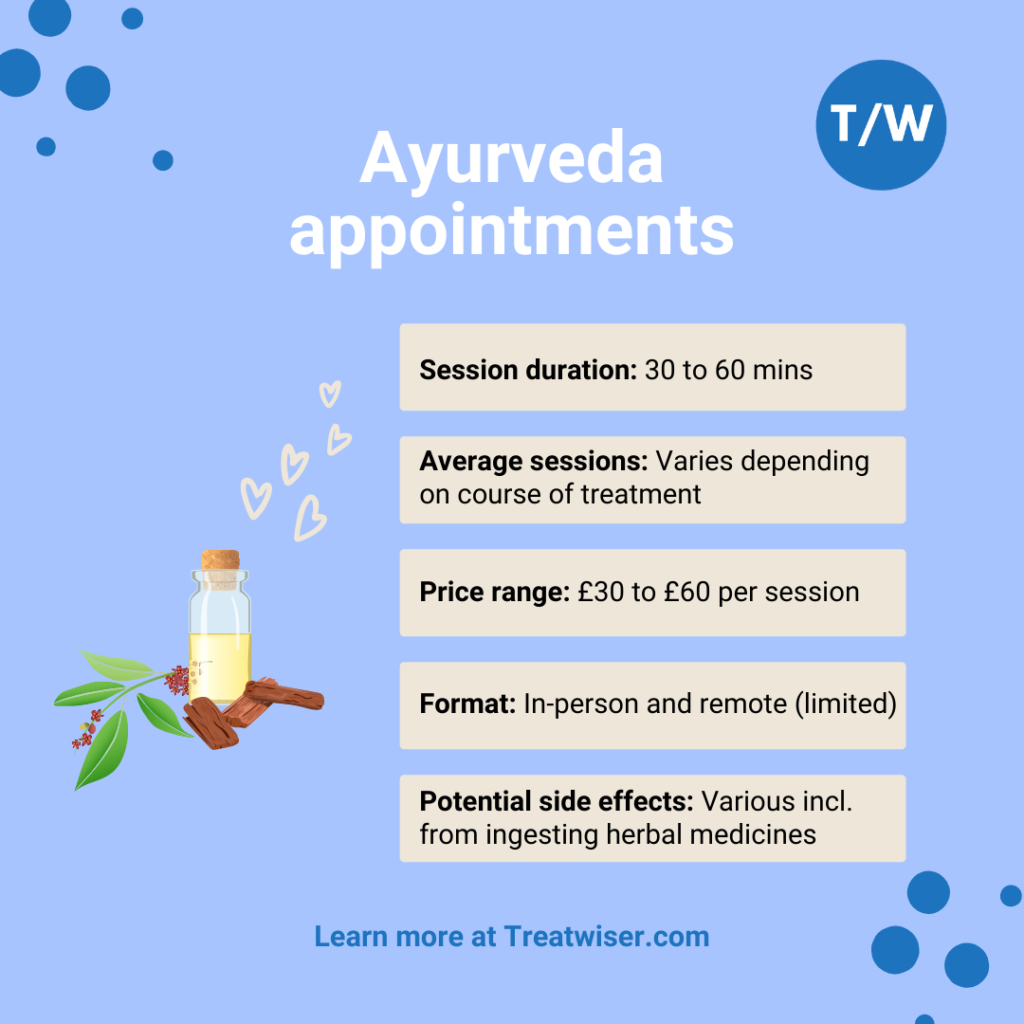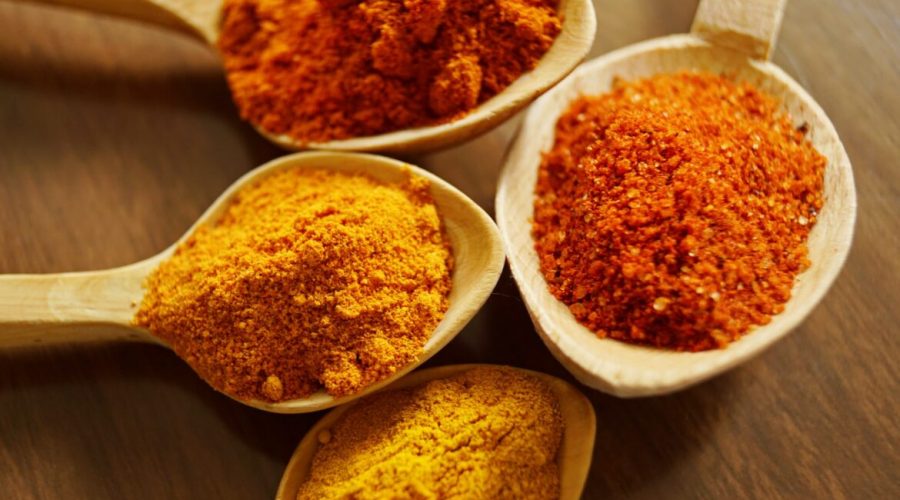Ayurveda is an ancient traditional system of medicine originating from India some 5,000 years ago. Contrary to Western medicine which attempts to cure a specific condition, the ultimate objective of Ayurvedic medicine is to better balance your body, mind and spirit and in doing so create a harmony that encourages good
Although Ayurveda has seen a surge in popularity with yoga and ayurvedic diets gaining mainstream recognition, it is common to have unanswered questions such as: “What is Ayurveda?”, “How effective is Ayurveda?”, and “Where can I find an ayurvedic practitioner near me?”
This page will explore the fundamental theories behind this ancient Indian healing system including Ayurveda body types, look at the evidence, and should you so choose, help you start your own Ayurveda journey.
Table of contents
- 5 interesting facts about Ayurveda
- What is Ayurveda?
- What is the theory behind Ayurveda?
- When and how is Ayurveda used?
- What is the evidence to support Ayurveda?
- What can I expect as an Ayurvedic patient?
5 interesting facts about Ayurveda

What is Ayurvedic medicine?
Ayurvedic medicine originates from South Asia and is focused on holistic wellbeing
The name Ayurveda derives from two Sanskrit words: ayur which means life and veda which means knowledge or science, emphasising the focus on a holistic lifestyle approach.
Ayurveda aims to identify and treat the root cause of illness alongside providing immediate relief from symptoms in order to create the conditions for lasting good health. Patients commonly report that while they were aiming to treat one illness they see a number of other improvements such in their skin, digestion, sleep and an overall feeling of wellness. Ayurveda aims to restore the natural harmony and balance of body, mind and spirit and in doing so, enhance your wellbeing, increase longevity, and ultimately enable self-realisation.
Ayurveda has a 5,000-year long history
Ayurveda is thought to be the oldest surviving health care system in the world with origins going back over 5,000 years, giving it a strong influence on other major systems of medicine including Traditional Chinese Medicine, Tibetan medicine, and Greek medicine.
The deep ayurvedic wisdom of the rishis or prophets was passed down orally and eventually documented in Sanskrit poetry known as the Vedas from around 1,500 B.C. The Vedas which form the backbone of Indian culture documented historical, religious, philosophical, and medical knowledge.
More detailed medical texts started to appear from 700 B.C. when ancient scholars documented wisdom on diseases, diagnosis, treatments, as well as medicines believed necessary for maintaining wellbeing.
The first major text, Charaka Samhita, was written by the ancient scholar Charaka and documented the medical knowledge of ayurvedic scholars from the time. The text is still considered a major authority today, covering the use and application of 1,500 plants and over 300 medicines.
A century later, a second major text called Susuta Samhita was written forming the basis of modern surgery and describing the medicinal healing properties of 700 plants.
Ayurveda has stood the test of time and is still widely used across the globe today including by over 90% of Indians. As such, surely there are learnings we can take to aid us in today’s world?
What is the theory behind Ayurvedic medicine?
Ayurveda is based on five elements and three doshas
The overall goal of ayurvedic practices is to create a sense of total harmony.
The key principle behind this concept is the constitution, which relates to your health profile, including strengths and susceptibilities to illness.
To determine your constitution, ayurvedic practitioners first consider the balance of the five natural elements. These elements form the basis of all matter including your body, where they support the functioning of the senses that enable us to interact with the environment.
The five natural elements are:
- Ether which is present in spaces such as the mouth, capillaries, and cells.
- Air which manifests itself in movements such as muscle expansions/contractions and heart pulsations.
- Fire which is present in the digestive system, governing metabolism, and body temperature.
- Water which includes bodily secretions such as saliva and digestive fluids.
- Earth which includes bones, skin and cartilage holding your body together.
The elements combine to form three doshas or metabolic body types which form the human body and influence all mental and physical processes.
Vata (ether/space and air): Someone who is unpredictable, changeable, and varied. Vatas tend to be slender with prominent features, joints, and veins, along with cool, dry skin. Vatas are often moody, enthusiastic, imaginative, and impulsive. Vata energy fluctuates, with high highs and low lows.
Pitta (fire and water): Someone who is relatively predictable. Pittas tend to be of medium build, strength, and endurance, well-proportioned, and often a fair complexion. Pittas are articulate, intelligent, and can be critical or passionate with a short explosive temper. The pitta type has consistent eating and sleeping habits, eating three meals a day, and sleeping eight hours a night. They are a warm body type that perspires heavily and are often thirsty.
Kapha (water and earth): Someone who is mostly relaxed and totally chilled. Kaphas are solid, heavy, and strong. With a tendency to be overweight, kaphas have slow digestive systems and often oily hair and cool, damp and pale skin. Everything kapha is slow: slow to anger, slow to eat, and slow to act. They may sleep excessively and deeply. They can tend to procrastinate and be obstinate.
Your constitution and health profile are driven by the ratio of the three doshas. Taking the correct diet and Ayurveda lifestyle for your constitution creates the conditions for health and wellbeing, whilst the incorrect diet and lifestyle for your constitution can lead to ill health and disease.
Most people will notice parts of themselves represented across all three doshas, and that’s normal! Just like a fingerprint, each person has a unique pattern, but we are all made up of a combination of doshas, with one or two dosha that are more dominant.
Ayurvedic doshas have clear links to health
Ayurvedic theory believes that excess or deficiency in any of the doshas may lead to disease or ill health.
Vata (ether/space and air): If left to their own devices vatas are more likely to eat and sleep erratically and are more prone to anxiety, insomnia, premenstrual syndrome, joint-disorder, bloating and constipation.
Pitta (fire and water): Pittas are more likely to suffer from acne, ulcers, haemorrhoids, obesity, poor digestion and stomach ailments.
Kapha (water and earth): Kaphas will be more prone to high cholesterol, obesity, diabetes, allergies, and heart problems.
When and how is Ayurveda applied?
Ayurveda is used for a broad range of conditions
The ayurvedic medicine system takes a holistic approach which aims to address overall imbalances rather than specific conditions.
People commonly seek out Ayurveda for the following reasons, however more research is required to support its efficacy, and you should always speak to your GP or qualified medical practitioner before booking any appointments:
- Addictions
- Anxiety, depression, stress
- Skin disorders
- Sleep disorders
- Weight loss
- Fertility
- Back and joint pain
- Digestive issues
- High blood pressure
- High cholesterol
- Type 2 diabetes
- And according to Cancer Research UK for symptoms relating to cancer
As an entire medical system, Ayurveda has a whole universe of treatments and techniques at its disposal which may be used depending on a prescribed treatment plan.
Ayurveda uses a range of treatments and techniques
There are many ritual of Ayurveda. The key Ayurveda treatments and techniques include:
- Dietary changes prescribed based on dosha, any imbalance and season (e.g., Kapha diet)
- Herbal medicine for all illnesses using vegetable based herbal choorna (powders taken as a tea), rejuvenative tonics and jams
- Ayurvedic Massage and ayurvedic body therapies like Shirodhara, Nasya and Netra Tarpana
- Exercises and Yoga including vigorous exercises to boost circulation and metabolism as well as gentle stretching yoga
- Meditation and breathing exercises like Pranayama to improve relaxation, awareness of self and others
- Sound therapy including the use of mantras
- Sun exposure to improve consciousness, circulation, vitamin D levels and bone strength
What is the evidence to support Ayurvedic medicine?
So just how effective is Ayurveda?
Although it has taken modern science a while to appreciate this ancient healing tradition, we are now even seeing some conventional doctors endorsing elements of Ayurveda.
Several small scale scientific and clinical studies have found some evidence that Ayurveda preparations and remedies may support overall health, however in general there is a lack of funding into research about Ayurvedic medicine. There are however limited studies and evidence on Ayurveda’s value for other health issues.
- Type 2 diabetes: Ayurvedic preparations may help people better manage symptoms of type 2 diabetes (1).
- Osteoarthritis: Preparations may reduce pain and increase function for sufferers of osteoarthritis (2).
- Glucose intolerance: Coccinia indica which was shown to increase glucose tolerance of majority of diabetics in trial after only 6 weeks (3).
- Anticoagulant and anti-tumour: Ashwagandha which has been shown to protect the heart and have anticoagulant properties and anti-tumour properties (4, 5).
- Migraines: Ginger may reduce migraines without the potent side-effects seen in common drugs (6).
- Heart disease and cancer: Turmeric which has been shown to have powerful anti-inflammatory and antioxidant properties with clear links to reducing risk of heart disease and cancers (7).
What can I expect as an Ayurvedic patient?
The ayurvedic appointment
During your first appointment, your ayurvedic practitioner will carry out a detailed analysis and diagnosis relying on observation as well as questions on your diet, lifestyle, mental and emotional states.
The practitioner will examine your body closely, paying particular attention to your pulse, tongue, eyes, and nails. He or she will also review your medical history in detail and your family medical history (your genetics)
Whereas conventional medicine measures your pulse to determine heart rate, Ayurveda has three distinct types of pulses – one for each dosha. The other body examinations will help to further build on this picture.
The first consultation will last for at least one hour, enabling the practitioner to diagnose any perceived dosha imbalances and develop a bespoke treatment plan for you.

How do I find an Ayurveda doctor and what qualifications should they have?
There are several professional associations in the UK setting standards for the practice of ayurvedic medicine and it is possible for ayurvedic practitioners to be members of more than one or none.
Due to limited regulation, it is important to understand that fully trained and qualified practitioners registered with at least one professional body will have to adhere to minimum standards including level of experience, qualifications, code of ethics and complaints procedures.
In addition to seeking recommendations from doctors and people you know who may have experienced ayurvedic healing before, we suggest exploring the following four professional bodies:
- Association of Ayurvedic Professionals UK (find a practitioner page)
- Ayurvedic Professionals Association
- British Association of Accredited Ayurvedic Practitioners
- Federation of Holistic Therapists
You can also use Treatwiser’s directory to find an ayurvedic doctor near me. Use the search features to narrow your search by location, professional body membership status, and more.
What is the difference between Ayurvedic practitioners and therapists?
There are two main types of ayurvedic professionals: practitioners and therapists.
Ayurvedic practitioners are required to complete rigorous clinical training at recognised universities and can provide medical diagnosis, prescribe treatments and give nutrition and lifestyle advice all from an ayurvedic perspective. Like conventional doctors, ayurvedic practitioners may specialise in certain areas or forms of treatment. For example, one practitioner may be an expert in herbal treatments but not massage therapy.
On the other hand, ayurvedic therapists are not trained as practitioners and may have limited experience. They are however able to offer nutrition and lifestyle advice as well as provide hands-on treatments such as massages.
How much will it cost?
Patients will most likely need to pay for ayurvedic treatments themselves as it is generally not covered under health insurance or NHS. The cost will depend largely on the treatments that you have.
Initial consultations typically cost between £30 to £60 but can be higher. For instance, some treatments requiring overnight stays such as for more intensive detoxification can cost significantly more.
Treatment tends to last for 1-6 months depending on the severity of the condition and the time of onset. Follow up consultations of 30 mins will typically be held every 2-4 weeks until the treatment has finished.
It is important that you receive full visibility on treatment costs before agreeing to commence.
What are the potential benefits associated with Ayurvedic medicine?
Ayurveda as a medical system offers an extensive range of treatments and techniques which have been known to bring several potential benefits through proper and regular application including to the overall quality of your daily life.
Examples of known benefits include:
- Weight loss and maintenance including through ayurvedic diets, lifestyle changes and body detoxes based on dosha type.
- Better looking hair and skin including through ayurvedic diets, herbal remedies and other antioxidants.
- Reduced inflammation which otherwise would contribute to chronic illnesses such as diabetes, stomach ulcers, cancers and heart disease, as a result of ayurvedic diet and herbal treatments,
- Reduced stress and anxiety especially through diet and herbal treatments as well and massages.
- Removal of toxins through treatments such as panchakarma which involves oil massages and enemas.
- Reduced risks of illness, cholesterol and high blood pressure.
What are the major risks associated with Ayurvedic medicine?
Although most Ayurvedic treatments and techniques including massage and yoga are generally safe, greater attention needs to be paid to treatments that involve herbal medicines.
- Only purchase Ayurveda herbs from a trained Ayurveda Practitioner where the origins of the herbs are known and can be traced back to source.
- Always follow the guidelines for taking herbs and dietary changes given by your practitioner / therapist
- Always inform your therapist/practitioner about any medicines you are already taking
- Ayurvedic herbs are not a substitute for allopathic (conventional) medicine and you should always consult your GP or medical doctor before you plan to stop taking any medications.
Resources and further Ayurveda information
- https://pubmed.ncbi.nlm.nih.gov/22161426/
- https://pubmed.ncbi.nlm.nih.gov/23365148/
- K. Azad Khan, S Akhtar, and H. Mahtab. “Cocinia indica in the Treatment of Patients with Diabetes Mellitus.” Bangladesh Med Res Counc Bull 5:2 (December 1979), 60-66
- N. Dhuley. “Adaptogenic and Cardioprotective Action of Ashwagandha in Rats and Frogs.” Journal of Ethnopharmacology 70:1 (April 2000), 57-63
- U. Devi. “Withania somnifera Dunal (Ashwagandha): Potential Plant Source of a Promising Drug for Cancer Chemotherapy and Radiosensitization.” Indian Journal of Experimental Biology 34:10 (October 1996), 927-932
- Mustafa and K.C. Srivastrava. “Finger (Zingiber officinale) in Migraine Headache.” Journal of Ethnopharmacology 29:3 (July 1990), 267-273
- T. Piper et al. “Mechanisms of Anticarcinogenic Properties of Curcumin: The Effect of Curcumin on Glutathione Linked Detoxification Enzymes in Rat Liver.” In J Biochecm Cell Biol 30:4 (April 1998), 445-456
DISCLAIMER: The Site cannot and does not contain medical / health advice. The medical / health information is provided for general informational and educational purposes only and is not a substitute for professional advice. Accordingly, before seeking any form of medical advice, diagnoses or treatment based upon such information, we encourage you to consult with your GP or other qualified health practitioner. You must never disregard professional medical advice or delay in seeking it because of something mentioned on this Site. The use or reliance of any information contained on the site is solely at your own risk.





